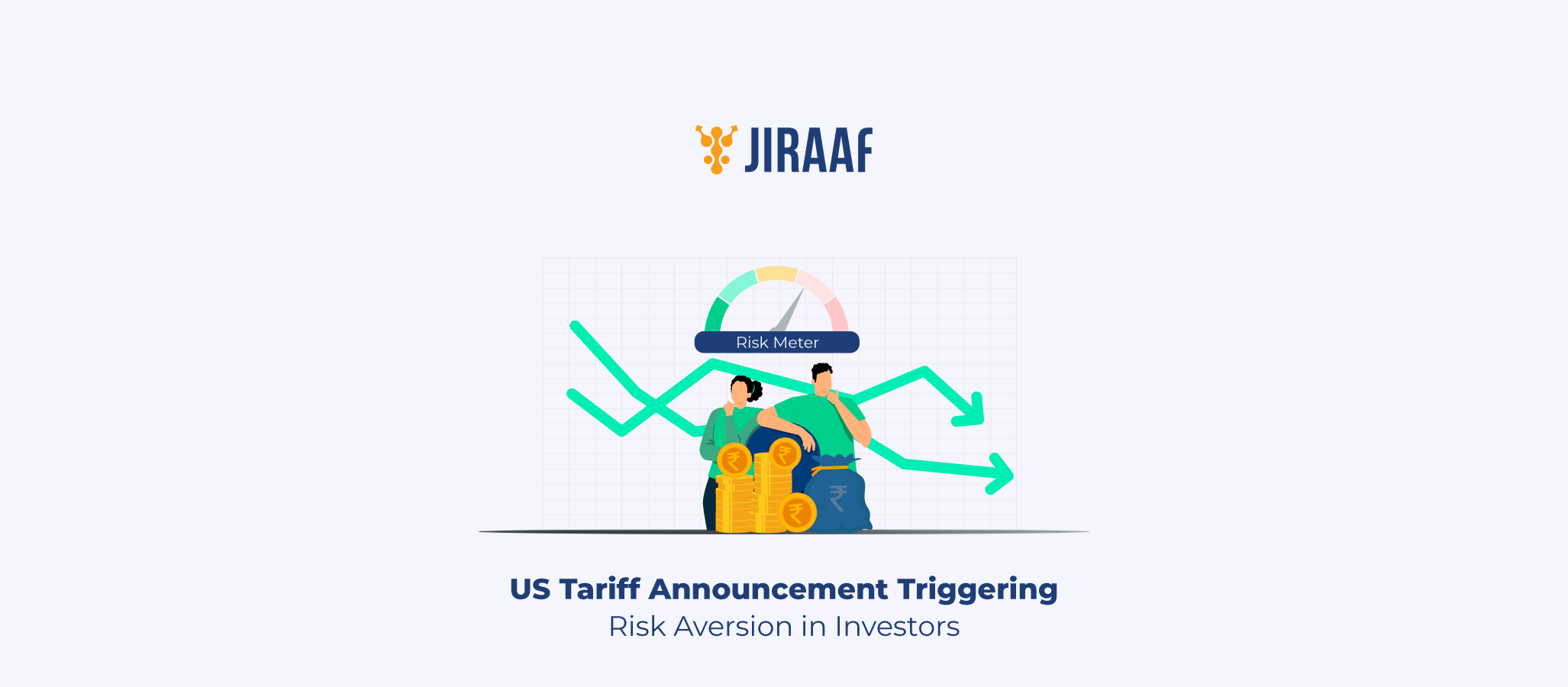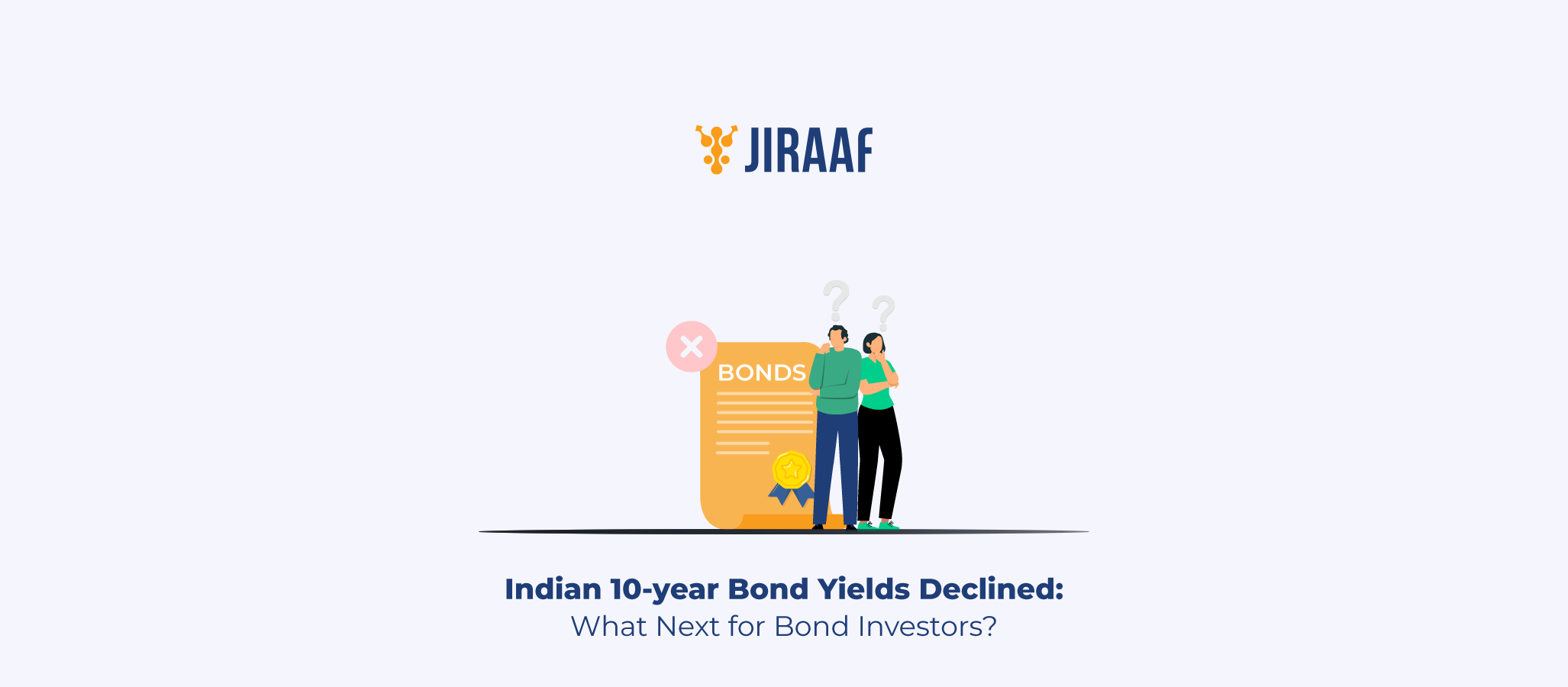Trade wars don’t whisper—they roar, with ruffled markets, shaken currencies, and erratic behavior in investors. Markets recoil, currencies swing, and investor sentiment wavers. On April 2, 2025, U.S. President Mr. Trump reignited global trade tensions with sweeping tariffs aimed at correcting longstanding imbalances. In response to this move, asset classes, from equities to currencies, have reacted with volatility, as markets expected them to.
But India’s bond market is witnessing an anomaly unfold, with yields falling, not rising. In a world that is leaning into volatility, India is leaning into stability. This isn’t luck; it’s the outcome of diplomacy, forward-looking monetary policy, and investors recalibrating their bets. Here’s what’s driving this divergence—and what it signals for the road ahead.
Tariffs Escalate, but India Finds some Breathing Room
On April 11, the U.S. hiked tariffs on Chinese goods to a staggering 145%, following China’s retaliatory 84% duties. The U.S.-China trade spat is back with a vengeance. But amid the chaos, India has carved out strategic breathing room.
Thanks to high-level diplomacy during the Indian Prime Minister’s February visit, Trump paused tariff escalation on India—capping duties at 10% for 90 days. This window, part of a broader nine-month negotiation framework, is more than a diplomatic formality. It’s a lifeline for exporters and a signal that both nations are serious about hitting their $500 billion two-way trade target by 2030.
India, in turn, has made calculated concessions. The recent Union Budget slashed tariffs on U.S. goods—from bourbon and EVs to Harley-Davidsons—addressing long-standing U.S. grievances. But this isn’t one-sided appeasement. India is simultaneously pushing for access for its agricultural exports, seeking to rebalance trade flows and reduce sectoral vulnerabilities.
The message is clear: New Delhi is using this pause not just to avoid short-term shocks, but to realign its trade strategy in a world becoming increasingly protectionist.
Indian Exports Under the Tariff Lens: Is It Time to Adjust?
Trump’s tariff blueprint zeroes in on India’s high-value exports: electrical machinery, pharmaceuticals, gems, nuclear machinery, steel, and seafood. These six categories alone made up over 50% of India’s exports to the U.S. in 2024—worth $42.2 billion, or 1.1% of GDP. If talks break down, retaliatory tariffs as high as 26% await.
But for now, the clock is ticking in India’s favor. Exporters are rushing to accelerate shipments, renegotiate supply contracts, and diversify end-markets. Pharma and precision engineering firms, in particular, are bracing for cost spikes and payment delays. Yet, thanks to proactive trade diplomacy, the immediate disruption is minimal.
Economists estimate that a prolonged deadlock could shave 30–40 basis points off FY26 GDP growth. But with a 90-day buffer in place, India is using the time wisely—and strategically.
Global Inflation, U.S. Policy Shifts, and India’s Calm Stance
Across the Atlantic, Trump’s tariffs are stoking inflation fears. By raising import costs, the measures are squeezing American manufacturers, especially those reliant on global supply chains. The Federal Reserve, which held rates steady at its March meeting, has flagged concerns that tariffs could derail disinflation trends.
For emerging markets, this would usually spell trouble. A stronger dollar, driven by inflation-led policy tightening, typically pressures currencies like the rupee. But India’s bond market is charting its own course—and that defiance is telling.
Yield Compression Amid Trade Turbulence Signals Confidence
Against the grain of global anxiety, Indian bond yields are falling. The 10-year benchmark slipped from 6.779% at the start of the year to 6.540% by mid-April. It’s not just a technical move—it’s a vote of confidence in India’s macro framework.
The Reserve Bank of India is the stabilizing force behind this shift. On April 9, it cut the repo rate by 25 basis points and shifted its stance to “accommodative,” citing a drop in FY26 inflation expectations to 4%. The market heard the message loud and clear – more cuts could follow if inflation remains benign.
This proactive stance has created a rare moment of policy credibility, combined with a stable rupee supported by foreign inflows. Where others see risk, investors are seeing reliability.
Foreign Investors Pivot to Bonds
Between January and March 2025, foreign investors pulled ₹1.12 lakh crore from Indian equities—a reaction to high valuations and muted earnings guidance. But the outflow wasn’t a vote of no-confidence. Instead, it marked a portfolio pivot: FPIs poured ₹51,730 crore (about $6 billion) into Indian government bonds under the Fully Accessible Route (FAR).
March alone saw ₹29,044 crore in bond inflows, helping the rupee appreciate and cushioning equity market volatility. It’s not flight—it’s finesse. Global investors are rotating out of frothy stocks and into India’s more predictable debt space, drawn in by more stable yields, policy predictability, and from JPMorgan’s GBI-EM index inclusion tailwinds.
The result? A decoupling of India’s borrowing costs from the noise of global geopolitics. This shift isn’t a flight from India but a nuanced reassessment of risk and reward.
Corporate Bonds Face Sectoral Stress
Not all segments of India’s debt market are unscathed. Export-heavy sectors like chemicals, metals, and auto components—vulnerable to tariff hikes—are under scrutiny. Credit spreads for BBB+ and lower-rated corporate bonds have widened by 20–50 basis points. The market is moving from broad-based caution to precision risk-pricing.
Refinancing risk is rising for firms exposed to U.S. tariffs. Investors are scrutinizing hedging strategies, forex exposures, and counterparty health. The game has shifted from systemic fears to company-specific stress testing.
The good news? The 90-day pause gives these firms a narrow but critical window to adjust. But complacency could prove costly.
Institutional Reforms Bolster India’s Resilience
India’s debt market is riding on more than just short-term sentiment. Structural reforms, like the FAR and inclusion in global bond indices, have increased liquidity and reduced volatility. These shifts are attracting long-term capital, not just opportunistic investments.
But this resilience has conditions. Inflation control and fiscal prudence remain non-negotiables. A flare-up in food or fuel prices could upset the RBI’s easing cycle and rattle bondholders. For now, the central bank’s measured approach—balancing monetary easing with exchange rate stability—has markets reassured.
India’s Calm Amidst a Storm
India’s bond market is sending a powerful signal in uncertain times: resilience is engineered, not accidental. While tariff tensions disrupt global flows, India has delivered a rare policy feat—yield compression, currency stability, and rising foreign bond inflows.
The 90-day pause in tariffs is more than a delay tactic. It’s an opportunity. By softening its stance on U.S. imports, New Delhi is buying time to deepen export diversification, strengthen supply chains, and buffer key sectors. Meanwhile, the RBI’s tactical easing and the draw of index inclusion are bolstering bond market credibility.
But beneath the calm lies a tightrope. Corporate bond stress, inflation risks, and trade negotiation uncertainties still loom. Sustaining confidence will require nimbleness—in both diplomacy and domestic policy.
In a world tilting toward protectionism, India isn’t just holding the line—it’s turning crisis into capital. For now, its bond market remains a rare bright spot, reminding investors that with the right architecture, confidence can prevail—even in a trade war.
Discover fixed income investments with Jiraaf, a SEBI registered online bonds platform that educates and brings access to a wide array of bonds. Sign up today to explore diversified fixed income investment opportunities to support your goal-based wealth creation journey. Start investing!



